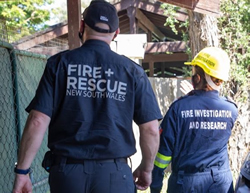 Knowing what to do in the first five minutes of a house fire is critical to saving a life, according to new research from Fire and Rescue NSW (FRNSW),
Knowing what to do in the first five minutes of a house fire is critical to saving a life, according to new research from Fire and Rescue NSW (FRNSW),
FRNSW Field Operations Deputy Commissioner Jeremy Fewtrell said the Adverse Fire Outcomes Report found that while there had been a reduction in accidental house fires over the past six years, they had become more lethal.
“The Adverse Fire Outcomes Report used predictive analysis of 30,891 FRNSW structure fire reports from 2016-2021 to identify risk factors of structure fire fatality, preventable fatality, injury, evacuation, and fire extension,” Dept Commissioner Fewtrell said.
“These fires led to a total of 109,592 persons evacuated, 2,346 injuries and 88 fatalities, of which 52 were deemed preventable.”
He said the report revealed important findings which would inform strategic direction and resource allocation at FRNSW, including that accidental structure fire fatalities over the past six years increased despite a reduction in fires.
Dept Commissioner Fewtrell said the report found response time was a critical factor in saving lives; the odds of fatality increased 4.3 times when a structure fire extended beyond the room of origin; and the odds of fatality increased 1.8 times when structure fires occurred at night,
“The report shows risk is complex and multi-faceted and there is no easy solution,” he said.
“Yet, the more we know about factors contributing to fire fatalities, the better we can target resources and prevention programs and inform evidence-based decision making.”
He said the report showed FRNSW programs needed to educate the community about what to do in the first five minutes of a fire.
FRNSW’s Adverse Fire Outcomes Report can be accessed at this PS News link.


